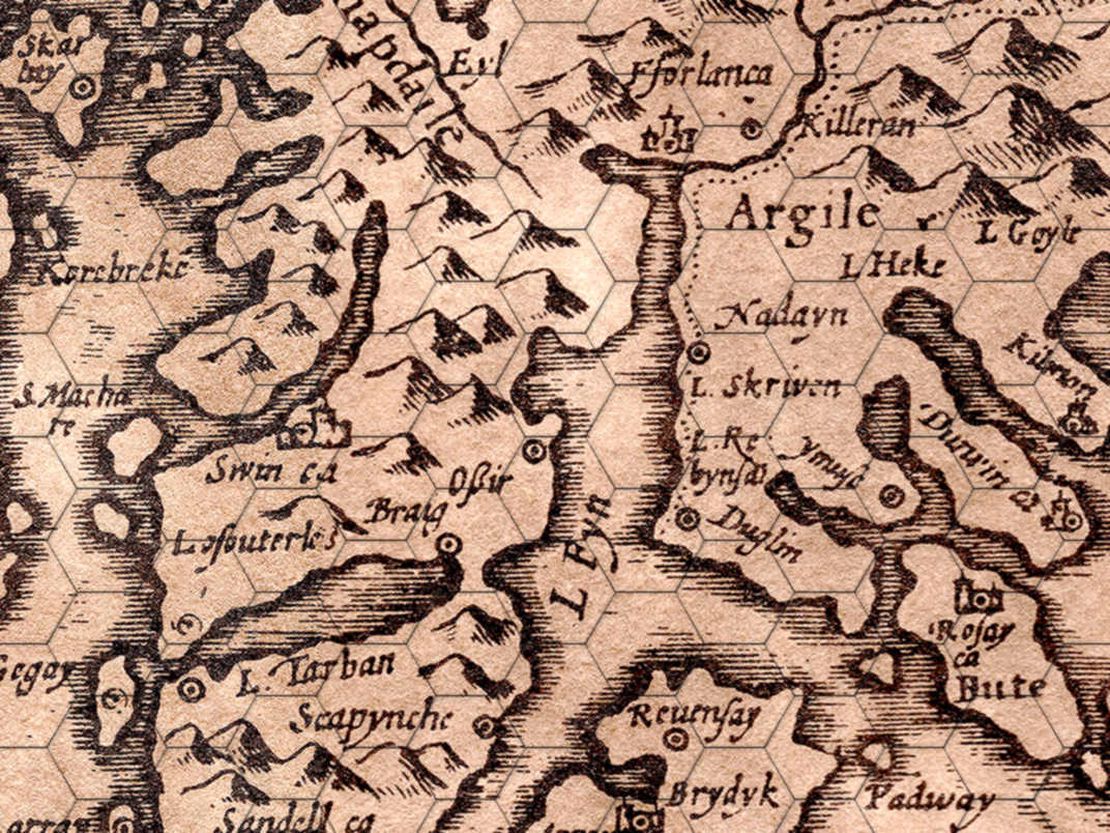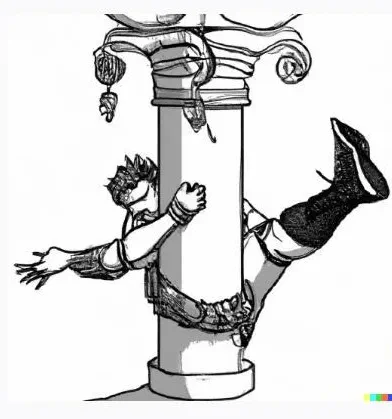
Scot Hexes
- Malin Freeborn
- July 19, 2025
This is a response to Robgoblin’s post on hex maps . It should have been an email, but Robgoblin has no contact details on the blog.
Our cartographic goblin argues that a six-mile containing one settlement doesn’t map to Middle Ages European fantasy settings, as any six-mile area would contain more than a single settlement.
Even in rural Scotland, relatively sparsely populated even in the mediaeval era, such a hex containing my hometown contains:
- The town itself
- Two or three villages
- Two Iron Age hill forts
- At least three castles
- Part of a line of Roman fortifications and signal stations, though none of the major structures fall within the area
- Sundry standing stones, churches, chapels etc
Robgoblin has obviously been blessed with more Scotland in his six-mile hex than I was, perhaps because I grew up on a Peninsula. So I thought I’d fill in some areas on a map, and stick some hexes down. However, this can create misleading results; an area with three defunct castles might not have had three castles at any point - each one could have fallen before anyone built another. So I’ve taken a map of Scotland from 1610 , and overlaid some five mile hexes (because I forgot the original used six miles while making the map).

There’s my old Argyll (previously, apparently, ‘Argile’). This all fits perfectly with the notion of one settlement, a long road, and lots of non-settlement hexes (presumably with a few abandoned mines and mad witches).
The cartographer has not recorded my home village, but I know people lived in the area in the 1700’s, and see nothing to stop people farming that land. It’s covered in rivers and grass - at the very least, you could put a few hundred sheep on it! And the islands nearby certainly had people living on them. And the same applies to the rest. You can’t wander two miles in Argyll without finding a river. I made rules for food in BIND but ignored drinking water, because I grew up in a place where - even today - we don’t need to carry water. You just keep walking, and you’ll find it.
This problem of farmland everywhere brings up a problem for every fantasy map, because when everywhere has arable land, everywhere has farmland. And when every plain grows vegetables, and every hill has sheep, the map has nowhere for the basilisks to go. By the year 1610, humanity had already terraformed the land, brought down the old forests, killed every bear and wolf in Britain, and left sheep everywhere.
This sort of thing doesn’t bother Tolkien, of course. Anyone could wander Endor for weeks, assured that the Balrogs live deep underground. ‘Wandering monsters’ wander seldomly in the prototypical fantasy world.
But anyone who wants to make a hex-crawl must assume strange places to discover, and monsters wandering this way and that. So the hex-crawl cannot live in a fantastic version of old Europe. Old Europe will have to make a lot of space for unpopulated hexes, which means a decreased population. So I guess my little village will have to go, and leave the map with some room for the basilisks.
